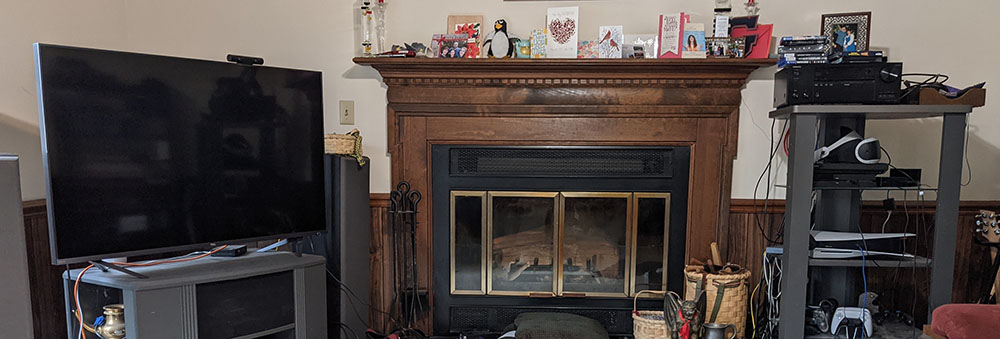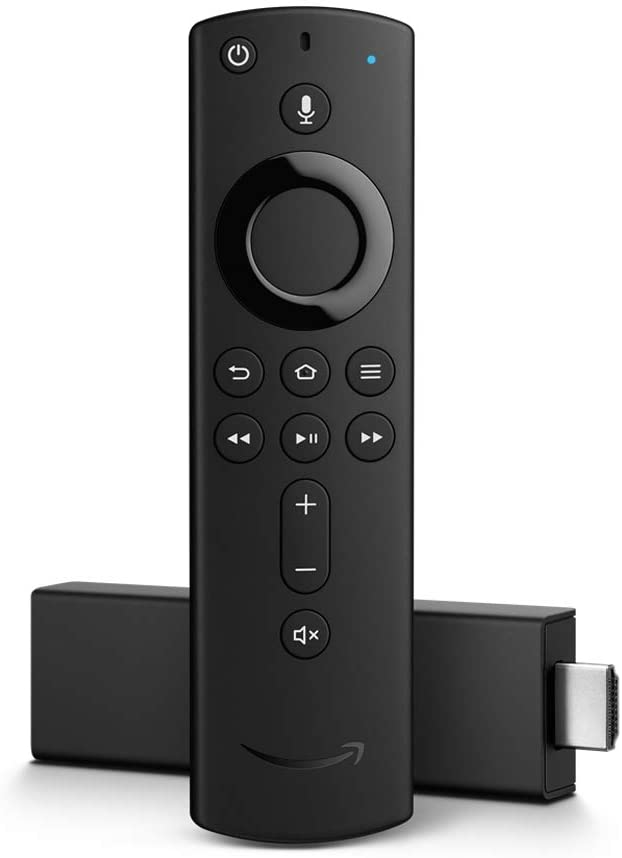(originally posted March 2021, updated May 2025)
I finally made the fateful decision and cut my cable tv cord. I’m also advising both my parents and my in-laws on their journey into the new streaming tv options. This article discusses my research and decisions and hopefully will help you figure out what you would like to try as well.
The decision to cut the cord was mostly a no-brainer for us. We simply watched almost no live TV beyond a little bit of sports. Almost all of our watching was off disc or via streaming. Inertia was the only thing keeping our cable-tv subscription and I finally overcame it.
My definition of streaming is watching a television show or movie that is being transmitted to you across your internet connection. You’re not using an antenna or a cable tv/fios box for that show. With streaming you have a much wider variety of options available to you than you do with over-the-air or cable. Streaming choices can be free (typically ad supported), cost a one-time fee, or require an ongoing subscription (typically $5-$10 per month). Obviously you need an internet connection to stream. We did pretty well streaming over a 100Mbps FIOS connection. Slower might work too.
I am going to talk three things you need to stream: a television, a streaming device, and one or more streaming services. Here is a table of contents for this article:
As you’ll see, there is some overlap between these topics, but I think it is helpful to consider each topic separately.
Note that I won’t talk much about Apple products and services in this article; I know they have streaming gear and channels but don’t know much about them.
The Television
Your television is probably the easiest part of the puzzle. The one you have will almost certainly work. But, let us still have a brief discussion about it to identify some possible issues you may encounter.
The standard cable connection for home video is the HDMI connection. That connection carries both audio and video between devices (cable box, video game consoles, streaming device, AV receiver, etc.) and your television. It is a wide rectangular shape with two angled corners:
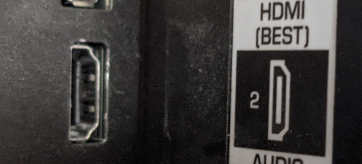
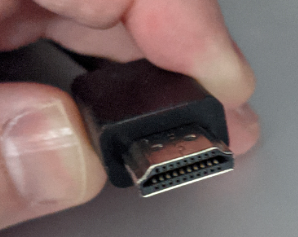
If your television has an unused HDMI input: you can easily add a new streaming device.
If your television does not have an unused HDMI input then you can:
- Stream using or replace an existing device
- Add an HDMI switch or AV receiver to connect more than one device to an in-use port
- Add an HDMI converter to connect to another type of port on your TV
- Buy a new TV with enough ports.
For my main, living room, television I have a single HDMI cable running from the TV to an AV receiver (see my full setup) with a lot of HDMI inputs. The receiver serves as a switch box and also drives my surround sound speakers for all devices. If you don’t want to use a receiver, Monoprice.com is a great vendor for cables, switches, and converters.
If you choose to get a new TV, you have a number of options that are well beyond the scope of this article. Currently I would recommend choosing a 4K/UHD television as opposed to the older 720p or 1080p/HD televisions or the just becoming available 8K. A 4K television is the sweet spot for price and performance. My 55-inch 4K television cost $400 from a Costco sale in February 2020 and I haven’t felt the need to replace it so far. Again, verify that the number of inputs is consistent with your planned device configuration. Also, check the physical dimensions of the television and make sure it will fit in the intended space and on your TV stand.
The Streaming Device
A streaming device is a gadget that runs the software necessary to receive and display a television show from the internet. Most current televisions are marketed as “Smart TVs” which have at least a limited ability to run streaming software. Many disc players and gaming consoles also have streaming capabilities. Take a look at what you already own before deciding to pick up a dedicated streaming device. My parents’ recent 4K TV purchase had Smart-TV features but they were very limited and confusing to use, so I bought them a FireTV stick.
Most computers, cellphones, and tablets are also supported by streaming services but may take some extra effort to connect to your TV. Frankly, streaming on portable devices is more useful while traveling.
There are four main, popular, brands of streaming devices.
- Amazon Fire TV
- Roku
- Android/Google TV
- Apple (not discussed in this article)
Each brand has multiple devices with different features and price points. A device that supports 4K is recommended if you either own a 4K TV or are considering buying one in the near future.
I have owned almost all of the Amazon Fire TV devices over the years and currently use a Fire Cube on the main family 4K TV, a 4K Max Fire Stick on my 720p office television and just bought a 4K Fire Stick for my parents. I like interface, flexibility and speed of the devices. There are a few services that are not directly supported but can be “sideloaded” if needed. Some TVs even come with a built in Fire TV functionality.
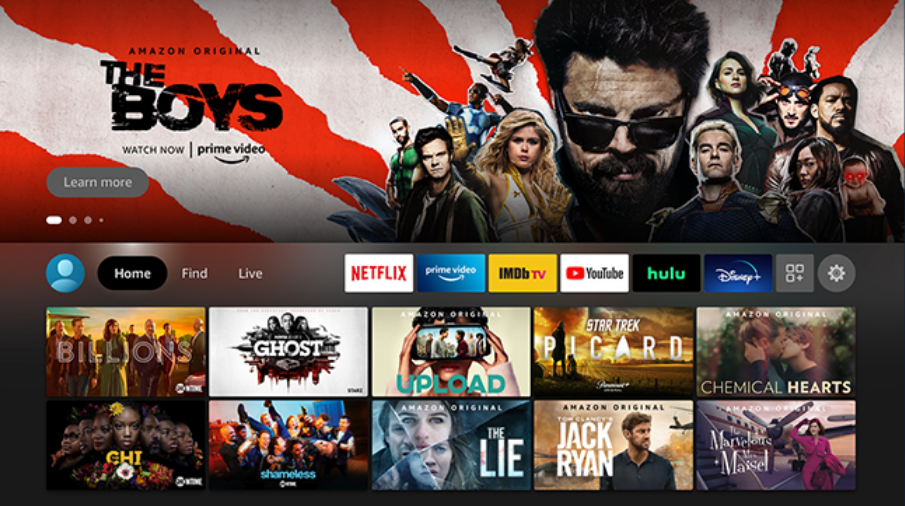
Roku is built into my current TV and many others but I have not used it very much due to already owning and being comfortable with the Fire Cube. It can also be purchased in a stick, box, or even sound bar form factor.
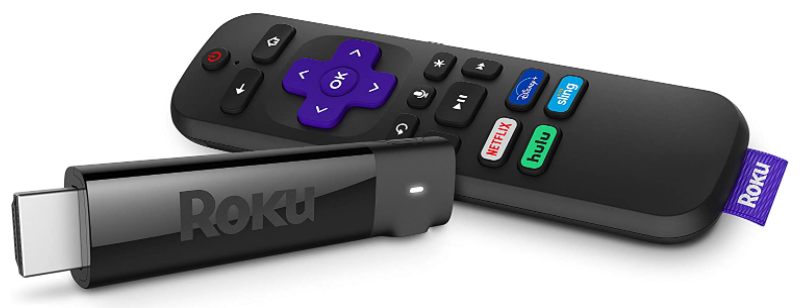
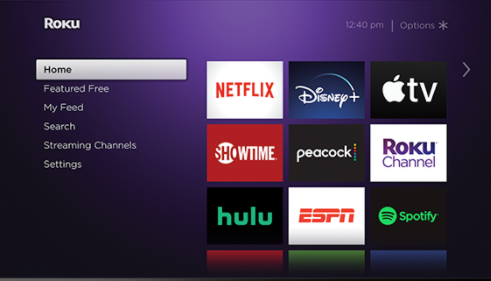
Android/Google TV, like the Android phone operating system, can be found on different devices from multiple manufacturers. Two name brands are “NVidia Shield” and “Google TV streamer.” Walmart has added its own Onn branded Android TV devices available in stick or puck (other puck) forms. The interface is very similar to the one on the FireTV devices. This is not particularly surprising as the FireTV is using a variant of the Android operating system. I am current experimenting with using an Onn 4K Pro on my family room tv due to changes in the FireTV interface (a lot more ads and rearranging things to make it much harder to get to my purchased movies or “favorited” shows.) So far, its going great. With a little extra effort you can add the Projectivity Launcher, which makes it easy to display only the services and apps that you want with no ads. I think the normal Google TV interface is better that the new FireTV interface, but the Projectivity option makes it even better.

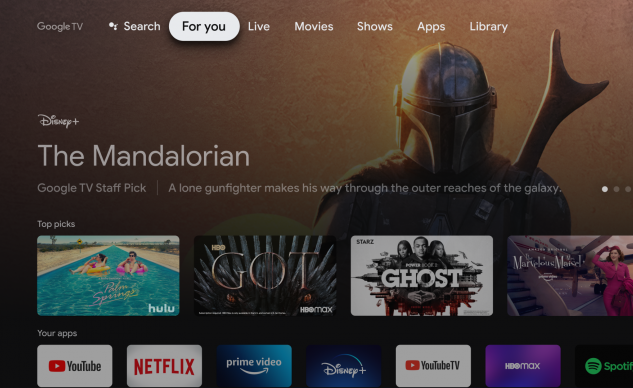


Apple also makes a streaming box that I have no experience with.
Which should you get?
To me, it boils down to if you are an Amazon Prime member or not. If so, I recommend a FireTV. The other devices have Prime Video apps available, but it is better integrated into the FireTV. If you are not an Amazon Prime member then the FireTV will likely be annoying with all of the ads for content that you can’t use, so I’d recommend one of the other devices. If you are ad-adverse, then a Google TV device may be a better choice for you even as a Prime member.
Streaming Services
I am only going to be able to hit the very high points of the streaming services that are currently available. I have sorted them by payment method:
Note that to use a streaming service on your device you will need to download the app for that service onto your device, launch it, and then log in with your account information for that service.
Free to Use Services
Most free to use services are supported by including advertising, like on most network and cable channels. Popular free services include IMDB-TV, Tubi, Peacock and Crackle. Regular YouTube also falls into this category.
If you haven’t cut the cable cord, many cable channels have streaming options that are free to their current customers. You’ll have to prove that you have an active cable subscription to use them.
Pay to Rent/Buy Content
The services in this category are typically free to install and use, but you have to individually purchase your shows. Services in this category include iTunes and Fandango at Home (formerly Vudu). Amazon and Microsoft also offer streaming rentals and purchases. Movies Anywhere is an interesting variant service.
Most of these services offer movie rentals in the $6 ballpark with a short window (like a week) to start watching the movie, and then a shorter window (24-48 hours) to watch it as much or as little as you like once you start. Fandango also has a large selection of free-with-ads movie rentals.
Or, for a higher cost ($10-20 is typical) you can permanently “own” a digital copy of the movie that you can stream whenever you want. I put quotes around the word “own” because there is nothing physical that you possess and companies can come and go or change their minds. Ownership of a virtual good can be ephemeral.
If you purchase a physical disc copy of the movie you will often receive a “digital copy” of the film as well. This will be a long code printed on a slip of paper in the package. You log into your account on specified service, type in the code, and unlock a digital copy of that film on that service in addition to the physical disc copy. Building a digital library can sometimes be done cheaper by buying physical discs than by buying only the digital copy.

A very interesting related service is Movies Anywhere. They don’t directly sell or rent movies. But you can link your other accounts in this category to your Movies Anywhere account. For partner film studios, movies purchased on any linked account (e.g. iTunes) can then be watched on any other linked account, including Movies Anywhere itself. So, you can shop sales and buy movie-A on iTunes when they have a discount, movie-B on Amazon with your delayed-shipping credits, and unlock movie-C on Fandango at Home with the digital code from a disc purchase and watch all three on your Movies Anywhere account. The current list of partners that MA links to is: Fandango at Home, Amazon Prime Video, iTunes, Goggle Play/Youtube, Microsoft Movies&TV, xfinity, Verizon, and DirectTV.
Alas, there is a catch: a few movie studios do not participate in the Movies Anywhere program, so their movies will be trapped on whatever service you purchase/unlock them on. Notably, Lionsgate and Paramount are not currently participating. Also, Movies Anywhere does not support TV shows, so those purchases are also trapped on their original service. It is possible that Movies Anywhere may reduce the digital ownership risk: if one of the partner services folds you may still have access to your purchases on the others.
There are a lot of online storefronts that sell digital movie codes that unlock on Fandango or Movies Anywhere. I have used these and saved a lot of money. But I have also had Fandango delete a few of the movies I bought this way due to how they were initially obtained by the storefront. These storefronts can be a little dodgy and unreliable. Exercise caution.
Subscription Services
There are a huge number of streaming services that require a monthly subscription. General interest services include Netflix, Hulu, Disney+, Max, Discovery+, Paramount+, Peacock Premium, and Amazon Prime Video. There are also scores of more focused subscription services like CrunchyRoll (for Anime), ESPN+ (sports), Acorn TV and Britbox (British shows), BroadwayHD (theater), etc.
Subscriptions start at about $5 per month sometimes with optional upcharges for no-ads, higher quality video, or more simultaneous streams. Amazon’s Prime Video is free with an Amazon Prime membership (or perhaps you get free two-day shipping if you subscribe to the streaming.) They have just started to include advertisements in their shows and charge $2.99/month for streams with no ads.
Each service will typically have a mixture of older content that you might have missed or enjoy seeing again and brand new content. Paramount+ has classic and current CBS shows plus old and multiple new Star Trek series. Netflix, Hulu, and HBO Max have their own high quality original fare as well. Disney+ has the huge Disney back catalog plus new Disney, Pixar, Star Wars, and Marvel shows including The Mandalorian.
These subscription services can be turned on and off on a monthly basis allowing you to jump around and sample or exhaust the content of interest on one before moving to the other. Or if you want to stick with a service, you can save a fair amount over the monthly cost by paying for a year at a time. Most services offer a free short-term (7-day or so) trial subscription. Be careful to cancel your membership before the trial ends or you may get billed for the next month.
A special category of subscription services are basically streaming cable-tv. You get access to most of your normal cable channels over your internet connection in one bundle. These services include YouTube-TV, Hulu+live TV, fubo-TV, Sling TV, and AT&T TV. They can be pricey ($65/month or so) and don’t necessarily save you money over a cable subscription, although you won’t be paying cable box rental fees.
Comments on Services that I have Used

Disney+ is my favorite streaming service. It is very high value for the price and has no monthly upcharges for 4K video, or multiple streams, etc. We have enjoyed shows from all of its component parts including The Imagineering Story and other behind the scenes shows about Disney and Pixar, Soul, The Mandalorian, WandaVision, multiple Secrets of the Zoo series and other nature shows.

We subscribed several years ago to CBS All Access (now Paramount+) in order to watch Elementary and Big Bang Theory. I don’t think either are still on the system. But we’ve stuck with the service to watch a raft of new Star Trek series. I chose to pay the upcharge for no commercials. If you are curious, they have posted the premier episode of most of their original shows to YouTube to watch for free: Premier Episode Playlist.
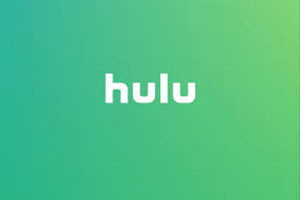
We subscribed to Hulu to watch Gotham and The Orville and have stuck around due to multiple discounted subscriptions on Black Friday sales ($1/month for a year.) The discounted rates are for the with-commercials version of the service so we haven’t tried the no-commercial option. There are several mystery shows that we have enjoyed on Hulu including Only Murders in the Building and Poker Face.

Amazon’s Prime Video is a free perk of being an Amazon Prime member. We’ve really enjoyed multiple Amazon shows including The Expanse, Upload, Jack Ryan, and The Marvelous Mrs. Maisel. Amazon offers free 30 day trials of their Prime membership which include access to Prime Video.
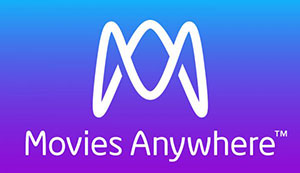
When I buy new discs, I now expect them to come with a digital copy and prefer one that unlocks on Movies Anywhere. Or if I want to watch a classic, it is fairly easy to get me to pay a $6 digital purchase cost over a $4 rental. I currently have over 900 movies in my Movies Anywhere library which I can watch, well, anywhere.

Fandango at Home/Vudu is a very similar service to Movies Anywhere. A few additional movie studios support it than are on Movies Anywhere and it also sells digital copies of TV shows. Due to account linking, 3/4 of my library on Vudu is the same as on Movies Anywhere, but I own enough Lionsgate and Paramount films (not currently on MA) that my current library on Vudu is 916 movies and 43 TV series.
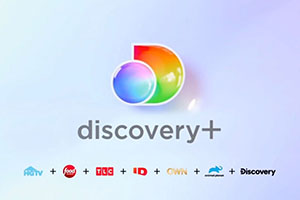
Discovery+ is a new service with content from HGTV, Food Network, TLC, History, Animal Planet, A&E, Lifetime, and more. Our first reaction was that there is a fair amount of content that we think we’ll enjoy and a fair amount that is not at all of interest to us. I ended up canceling my subscription after a year but may return at some point in the future.

Britbox is a service that combines many shows from both the BBC and itv. There are a huge collection of shows available, but some of the most popular choices are missing and only available on the BBC America cable channel. We have enjoyed watching Luther, Gardener’s World, Father Brown and a zoo show. There are a lot of other police/mystery options that we haven’t tried yet. Notably not available are shows including new Doctor Who (classic seasons 1-26 are available), The Watch and Orphan Black.

Netflix is the best known streaming service. We have had and enjoyed a subscription, but there isn’t enough there that we like to keep paying them continuously. We dropped our subscription after a year but I expect we’ll rejoin and drop off again from time to time as they accumulate more content that interests us.
Conclusion
There are an amazing assortment of options for streaming out there. The choices are overwhelming. But, I think you can get a lot of enjoyment by using free-trials or jumping around from service to service for a month or two at a time. When you find something you really like that has a deep library and interesting new shows coming out regularly you can invest in an annual subscription.
But, watch your total costs! I turned off my cable tv, turned in the rented cable boxes, increased my internet speed, and subscribed to Disney+, Paramount+, and Hulu for only a slight net savings. But, I am now using much more of what I am paying for and enjoying my TV a lot more.
My Living Room Setup
- Television: 55″ TCL 55R613 6-series 4K TV (with Roku)
- AV Receiver: Onkyo TX-NR656
- Streaming Device: Amazon Fire TV Cube (3rd Gen) and Onn 4K Pro Google TV
- 4K BluRay player: Sony UBP-X700
- Video game consoles: PS4 , PS5 with PSVR2
- Current subscriptions: Paramount+, Peacock, Disney+, Amazon Prime Video, Hulu, and Britbox
